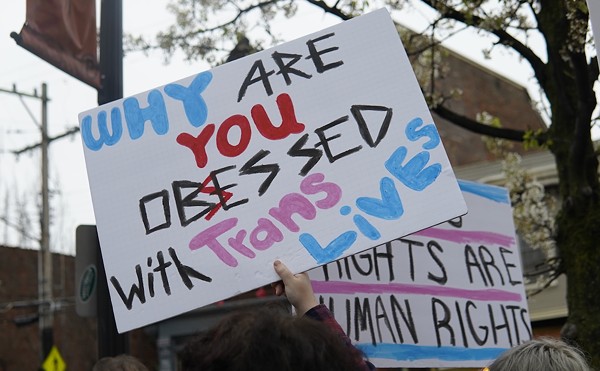Two weeks ago I stood on the stage at Fountain Square looking out at 100 or more of the city's young professionals. They were manning tables at the Chamber of Commerce's YP Cincy event and pitching the lunchtime crowd on their various business, social and arts orgainzations.
The diversity and enthusiasm were amazing — young people from corporations, small businesses and arts groups; musicians, bankers and nonprofit staffers; white, black, Hispanic and Asian. For one hour on a Wednesday, all was right with Cincinnati — bright, creative, energetic people controlled Fountain Square, chatted up downtown workers and basked in some attention.
Mayor Charlie Luken strolled among the tables, made remarks from the stage about the role these young professionals will play in Cincinnati's future and read a proclamation naming it YP Cincy Day. Then he returned to City Hall to help undo all the goodwill.
Two days after the event, city council voted to give Convergys up to $52 million to consolidate its downtown workers. Cincinnati's young professionals once again came up empty handed.
It's been interesting watching the Creative Class Bandwagon grow over the past year. In the wake of Richard Florida's buzz-creating book, The Rise of the Creative Class, local awareness of the concept began with Florida's speech here last summer (see "Cool Is Money," issue of June 20-26, 2002).
After the bandwagon picked up speed, the politicians jumped aboard. Now just about every council member as well as the mayor and city manager peppers remarks with references to retaining and/or growing Cincinnati's creative class.
And so the bandwagon creeps along, bogged down a bit by the newly converted believers who want to hire young professionals, hear their ideas, get their buy-in, sell them something or simply hang with them.
Meanwhile, the folks who have been driving the bandwagon from the beginning — the bright, creative, energetic people on Fountain Square and hundreds more like them — are looking for someone else to take the wheel for a little while. They need a break.
Darren Blase, co-owner of Shake It Records in Northside, recently wrote an impassioned plea to city council for some help clearing out the drug dealers from in front of his business. He doesn't want to have to carry a gun like his neighbor Hal McKinney, and he doesn't want to move his shop to the suburbs.
Blase is bright, creative and energetic, and he wants to invest his money in the city. Northside is slowly becoming a key home base for Cincinnati's creative class, but it has a ways to go.
Blase says he received some sort of response from everyone on council and a visit from Laketa Cole, but so far nothing concrete has been offered to help his vital stretch of Hamilton Avenue in Northside.
There are people like Blase in every Cincinnati community that's on the edge of succeeding and failing — neighborhoods like Price Hill, Corryville, Avondale, Over-the-Rhine and College Hill. There are plenty of young people who care about their neighborhoods and want to put their money into helping out — not every creative twentysomething has left town. Yet.
But the creative class can't fix all the blighted buildings, track down all the slum lords, run off all the drug dealers and pick up all the garbage. They need help. Just a little.
And that's where the mayor, city manager and city council come in. It's their turn to drive the bandwagon, to step up.
When Blase and his creative cohorts look for help, they're usually told there's nothing left in the city's budget. But just two weeks ago political leaders magically made $52 million appear from exhausted city finances and then just as quickly gave it all to Convergys.
They also muttered something about making sure they're never forced into such a giveaway again. Next time it'll be different, they said. Next time.
Imagine what the $1 billion we spent on new stadiums could have done to boost the creative class' efforts to make Cincinnati a more interesting and economically stimulating place. Oops, maybe next time.
How about the $20 million we gave Lazarus to stay downtown? Next time. The $6 million we gave Saks? Next time. The $15 million for a Kroger garage? Next time. Millions spent to shutter small businesses to pave the way for a Nordstrom that didn't come? Next time.
According to Richard Florida, one of a city's most attractive components for the creative class is its authenticity. Young creative people love authentic places with real architecture, geography and culture — attributes that Cincinnati actually has, which is good.
It's also bad news for politicians who like to attend creative class parties but won't back a creative class vision for turning Cincinnati around. The creative class can smell a phony a mile away, and it sure stinks at City Hall.





